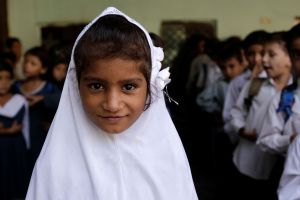This report is a collection of perspectives from 20 authors that highlights the needs of rural girls and solutions to the challenges they face.
Introduction
Girls Leading: From Rural Economies to Global Solutions—available as both a fully online digital experience and as a PDF—is a collection of diverse perspectives from 20 authors around the world. The authors share their research and stories of personal struggle and triumph to highlight the needs of rural girls and solutions to the challenges they face.
Key Findings
An estimated 3 billion of the world’s 6.9 billion people live in rural areas of the developing world. More than 60 percent of them live in poverty. Poverty affects women and girls disproportionately; rural girls face triple the challenges to their empowerment and well-being by virtue of their youth, gender, and location. Investing in rural girls’ health and safety, as well as their personal and professional development, has the potential to transform rural economies.
The report also includes recommendations, arranged by age group, for critical moments in a girl’s life where both small and large actions can make a huge difference. Many of the most pressing global issues—climate change, economic development, health, and education—demand that we consider rural girls. The world changes as their lives change.



